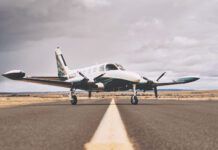Earlier this year, there were a number of near misses during airport operations. These included one aircraft nearly landing on top of another that was taking off while both were operating under an ATC clearance. Then an aircraft crossed an active runway without a proper clearance. The list goes on.
As you might expect, I’m often asked by friends and family for my take on current aviation events. In this case, people naturally want to know if “the system” is breaking down enough to allow these incidents.
I have no special insight, and as of this writing in late March, the FAA hasn’t announced any findings. These things do happen occasionally and my best guess is that it’s just a coincidence that a number of them happened in a short period. Hopefully, that means that the law of averages will keep any more from happening for a long time.
Fortunately, these incidents didn’t become the catastrophes they were set up to become. Instead, neither property nor people were damaged. Why? How was disaster averted? In most of the cases, it was good situational awareness.
A new pilot usually has her or his hands full just managing the flight path of the aircraft. But, as that gets easier, there are more brain cycles left over to listen to the radio to form a mental image of what’s happening in the airspace around us. It’s that mental image, that situational awareness that kept most of these incidents from becoming catastrophes.
Once when I was flying at the airline we were going into San Francisco with the all-too-common marine layer keeping things at low IMC. We were closely following another aircraft. We couldn’t see him due to the low clouds and fog, but we knew he was there from listening to the radio and building this mental image of what was happening around us.
That preceding aircraft had slowed to landing speed much earlier than normal and we were closing the gap enough that both of us in our crew of two were concerned we were getting too close for safety. Tower advised that preceding traffic to clear the runway without delay, but the low-RVR visibility and perhaps that crew’s lack of familiarity with San Francisco meant they were taking too long.
Seeing this whole scenario develop in our mental images, both of us were already spring loaded for a go around. Tower, also seeing a potential problem developing, advised us to be ready for a go around. I was on the radios that leg and I replied with unnecessary sarcasm, “Ohhh, yeah! We’re definitely ready.” Sure enough shortly after, Tower told us to go around as the preceding aircraft had meandered by the taxiway they should have taken.
This was no incident, no danger. Really, it was all just part of the job. But, doing that job safely relied on having good enough situational awareness so that we could tell how things were developing. I’m going to guarantee you that your flying will be safer if you can form a similar mental picture of what’s happening.
If you don’t yet have that picture, one way to gain it is to sit in your favorite arm chair and simply listen to Tower or CTAF at your nearby airport, using a radio or LiveATC.net. Try to picture what’s happening—who’s where and what are they doing. Develop the skill to form that mental image and you, too, might one day turn a potential catastrophe into a mere incident, or better yet, a non-event.





